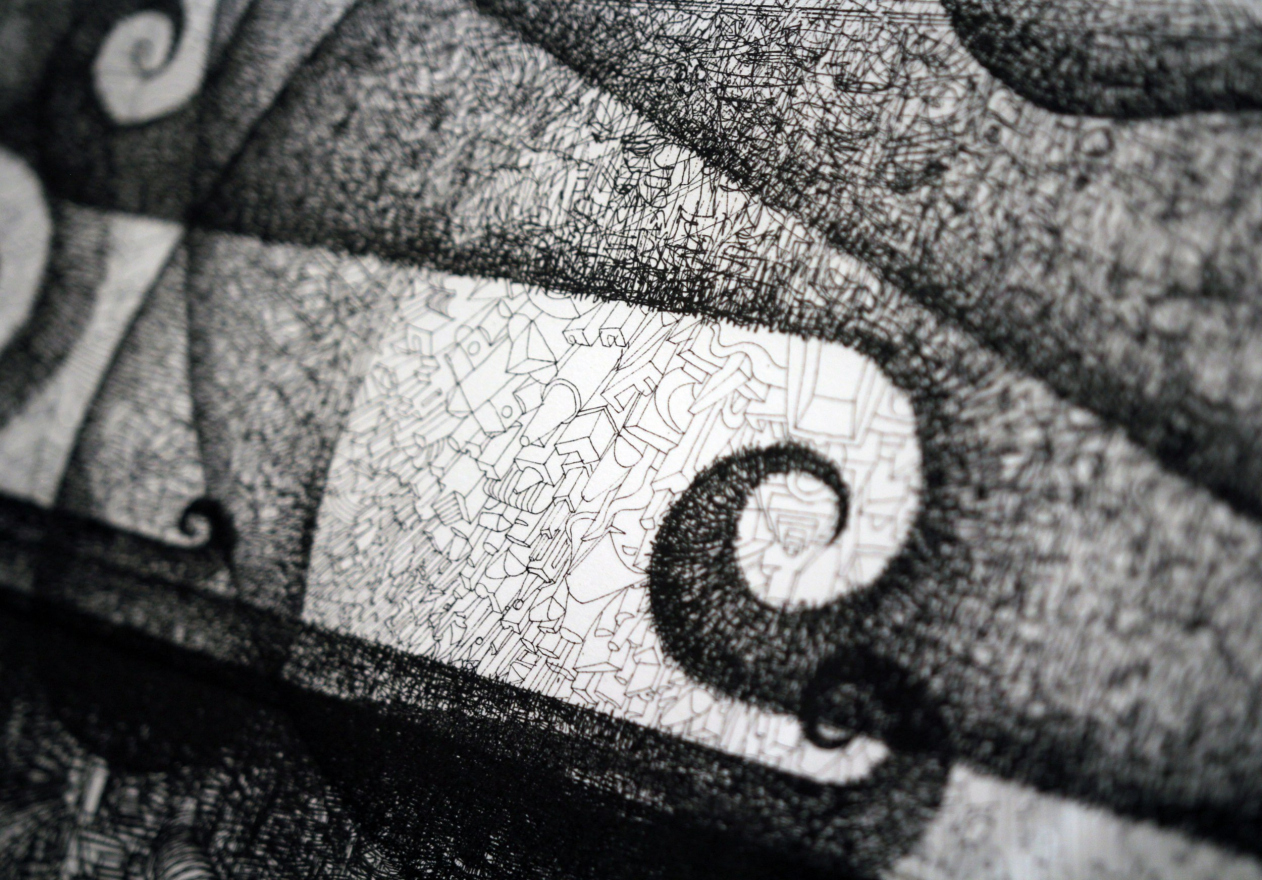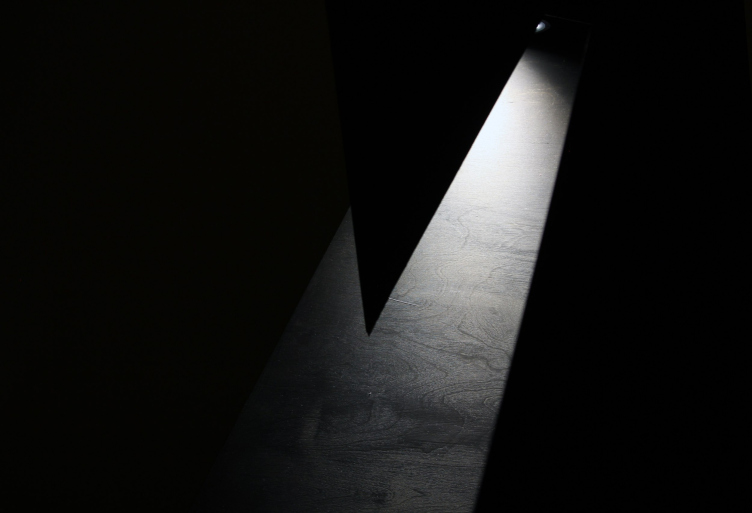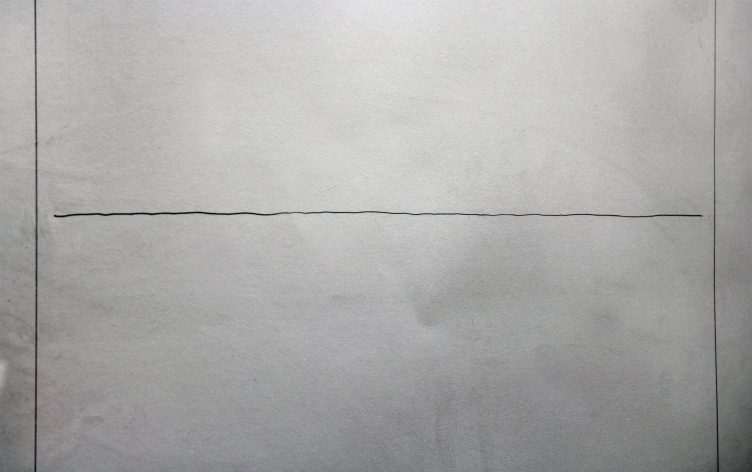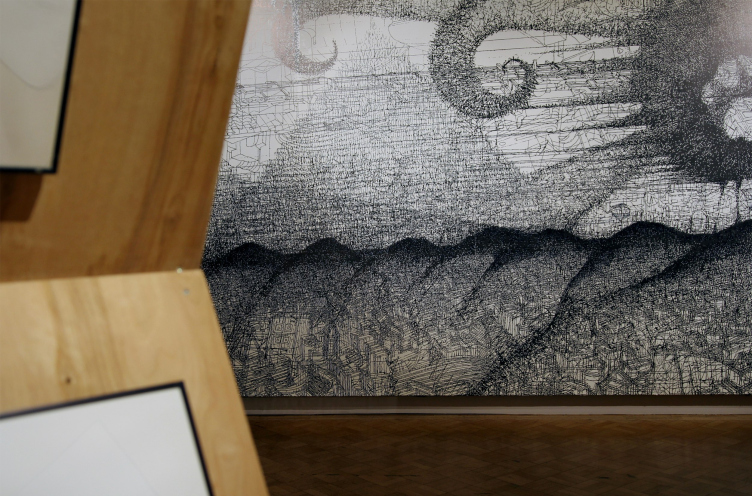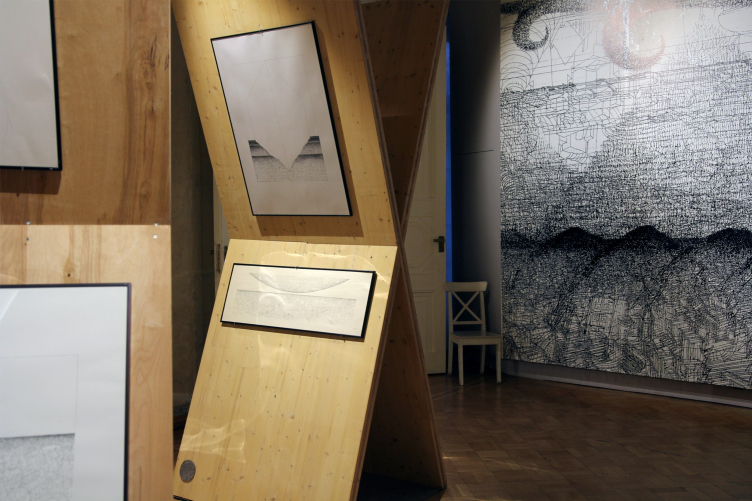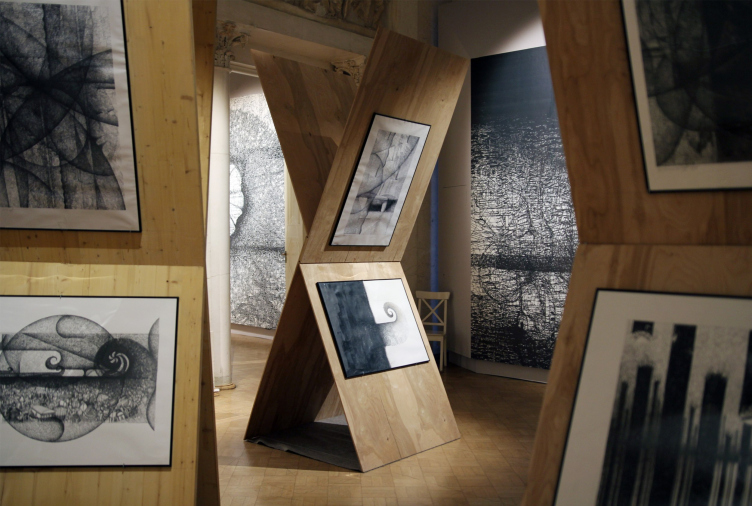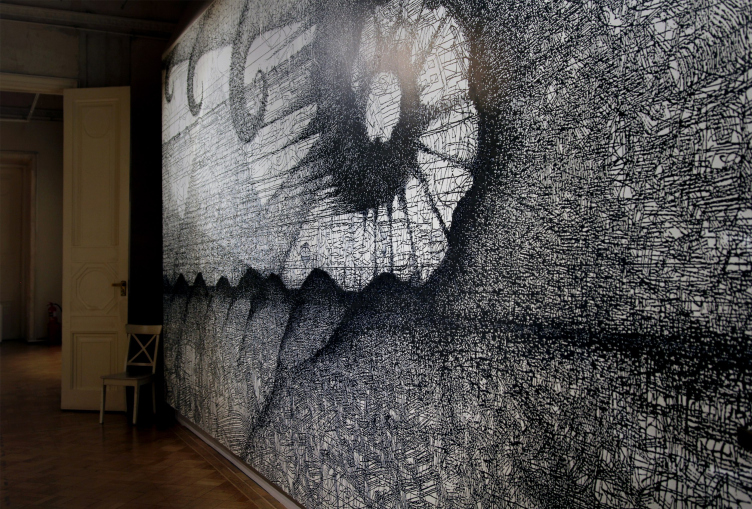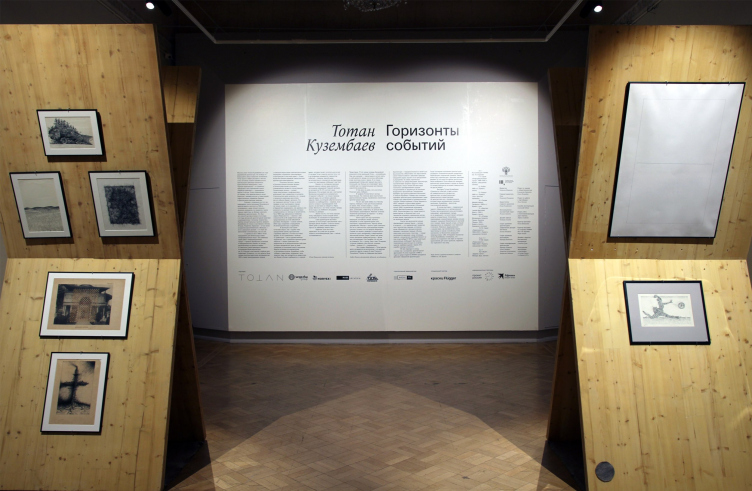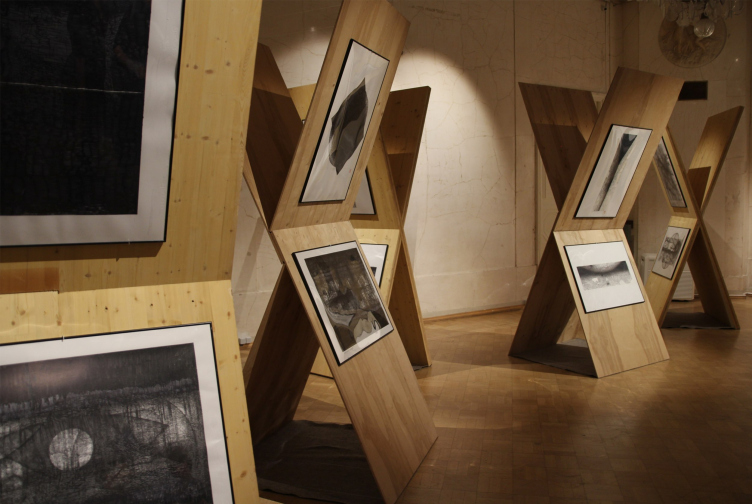The blackness that we see here is of two kinds: the graphics itself thickens, the contours become shallower and are overlaid on each other in layers to the point of complete unreadability – as rightly said in the manifesto of the exhibition’s curator Julia Shishalova, plunged into “black holes”, formations with strange overconsolidated matter, of which our universe consists by 70%. This is a very meticulous and labor-intensive approach to blackness, and it would be strange if it were not complemented by another – a felt-tip pen, as if by rain, easily releasing shadowy energy.
The exhibition of Totan Kuzembaev′s works “Event Horizons”, 2023, Museum of Architecture
Actually, it is this path from “light” to “dark” graphics that presents the driving idea, which turns the exhibition into a continuous statement-like installation. This very driving idea began to unfold a little bit earlier, with a small “prototype” exhibition that took place at ArchMoscow in May: back then, seven X-shaped wooden stands displayed 24 sheets. The stands, whose sum (if we take the X to be a Latin 10) gave the anniversary 70, were arranged in a semicircle in the arc of the amphitheater, and, with a little bit of imagination, you could see a solar clock in them, counting the time from light to dark.
Now there are 56 sheets. The X-shaped wooden stands from ArchMoscow are complemented by slimmer plywood stands; the exhibition begins and ends in two “lanterns”, one of them light, standing in the museum’s yard, the other one dark, in the last exposition hall of the enfilade. Both of them, following the plastique ideas of ASNOVA, consist of two mutually penetrating pyramids, and give two triangular spots of light, upwards and downwards. The message is rather obvious: they mark the light point of the beginning and the dark point of the end.
The exhibition of Totan Kuzembaev′s works “Event Horizons”, 2023, Museum of Architecture
Everything else is sandwiched and distributed between these two points: the “horizon”, depicted as a simple straight line drawn on a white sheet of paper in the first hall, and lots of “whirlpools” of trees and waves. In this juxtaposition of light and dark on can you easily guess yin and yang – things that are opposite, yet inseparable.
The exhibition of Totan Kuzembaev′s works “Event Horizons”, 2023, Museum of Architecture
The exhibition of Totan Kuzembaev′s works “Event Horizons”, 2023, Museum of Architecture
Copyright: Photograph © Julia Tarabarina, Archi.ru
The exhibition of Totan Kuzembaev′s works “Event Horizons”, 2023, Museum of Architecture
Copyright: Photograph © Julia Tarabarina, Archi.ru
Most of the exhibition consists of the Weightlessness series, 44 sheets out of 56, which was in fact started back in 1988. My personal favorite was “Kazakhs in Space”. I cannot say that it was drastically different from the others, but it did have a unique signature.
I also cannot say that there’s anything particularly Kazakh about Totan Kuzembaev’s graphics, even though the architect does enjoy remembering his origin now and then, and his drawings often feature yurtas and camels; Andrey Ivanov’s annotation to the exhibition also begins with a scene where little Totan lies in a steppe watching the stars. However, Kuzembaev artist and Kuzembaev architect is quite European, and it seems to me that his passion for avant-garde is more important for him than the steppe, and the Occident is presented in his works through western techniques: not for nothing, for example, in the proto-graphics of the 1980s from the collection of the Museum of Architecture, the head of Mephistopheles is the most similar to all that followed.
At the same time, the stability of Kuzembayev’s mature graphics is built not only on shallow linear drawing. It is everywhere – a linear image of cities from above, composed in perspective, but generalized, so that the building becomes like a dense carpet. There are houses with courtyards, ziggurats like the Tower of Babel, but in general it is a homogeneous space. At some point, quite soon, the “carpet” plane begins to be perceived as a pattern, a kind of lace, or a fabric – it is not difficult to tear it into shaggy, horny curls and protuberances, just as one layer can be overlaid with another.
Space in this graphic is reduced, as if as a joke, to a plane, with which you can do anything. Perhaps this is the secret of “Weightlessness”: either we are flying on a kind of magic carpet, high enough for the three-dimensionality of the endless city to become frivolous and malleable for transformations, or this fractional perspective itself is the magic carpet, and we, stuck in its lint, are already being carried somewhere on it.
The exhibition of Totan Kuzembaev′s works “Event Horizons”, 2023, Museum of Architecture
Copyright: Photograph © Julia Tarabarina, Archi.ru
The exhibition of Totan Kuzembaev′s works “Event Horizons”, 2023, Museum of Architecture
Copyright: Photograph © Julia Tarabarina, Archi.ru
Serious additions to the exhibition are the enlarged printouts of the graphics, finalized by the author by hand, right there before the opening of the exhibition. They are a good way to immerse yourself in the context. In general, enlarging something small to a greater size that is not typical of is a technique that works well nowadays.
The exhibition of Totan Kuzembaev′s works “Event Horizons”, 2023, Museum of Architecture
Copyright: Photograph © Julia Tarabarina, Archi.ru
Another peculiarity is that the exhibition is prefaced by sheets from the Museum of Architecture, the architect’s works from the 1980’s, including those related to the design for Zelenograd. Some of them are quite different – collages, grid structures in which one can barely distinguish bus stops and steles of the science city – a search for a mannerism, something forty years old, now turned into museum exhibits. You can also see graphics, in which prototypes of “Weightlessness” can be found – linear, but still intricately composed.
The exhibition of Totan Kuzembaev′s works “Event Horizons”, 2023, Museum of Architecture
Copyright: Photograph © Julia Tarabarina, Archi.ru
And, finally, the exhibition has not just one, but three manifests. Not every exhibition is that lucky!
The exhibition curator Julia Shishalova’s manifesto is the most lengthy and clear; it explains the most and gives the most hope, which is important in our time. Andrei Ivanov’s text plunges into the context of Cy Twombly and Pierre Soulages – someone may hear these names for the first time. The words of Mark Hakobyan, the museum’s curator, who produced the old works from the collection, remind us of the experiments by avant-garde masters, which is also important and appropriate, since Totan Kuzembaev is one of such masters of “paper architecture” who at times do show a special passion for avant-garde art.
The exhibition of Totan Kuzembaev′s works “Event Horizons”, 2023, Museum of Architecture
Copyright: Photograph © Julia Tarabarina, Archi.ru

